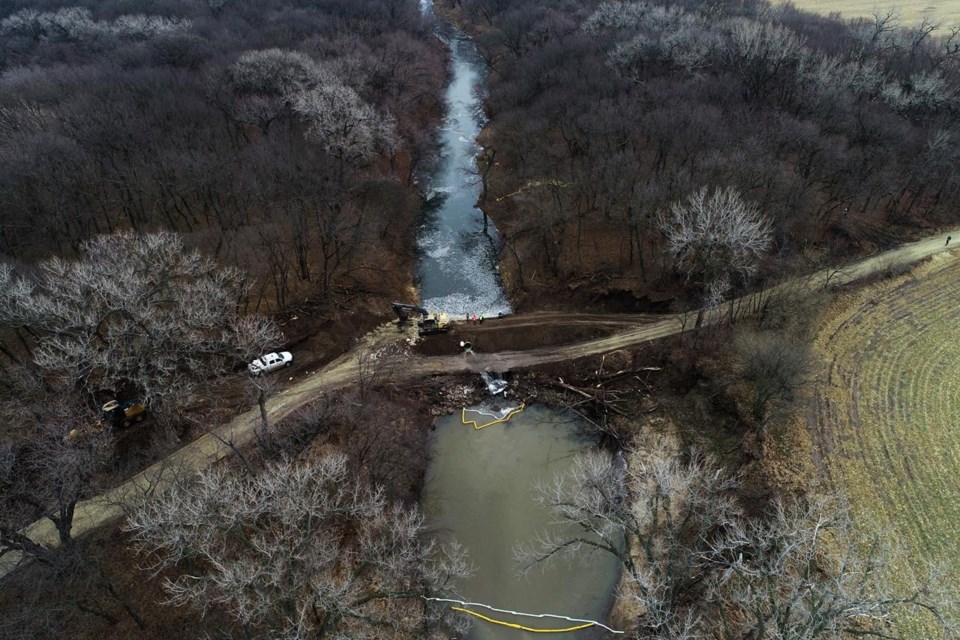TOPEKA, Kan. (AP) — The operator of a pipeline with the largest onshore crude oil spill in nine years has reopened all of it except for the stretch in Kansas and northern Oklahoma that includes the site of the rupture.
Canada-based T.C. Energy said in a statement Wednesday night that its Keystone system has restarted operations from Canada to southern Nebraska and from there to south-central Illinois. It also is operating the pipeline from northern Oklahoma to the Gulf Coast.
forced the company to shut down the Keystone system and dumped about 14,000 barrels of heavy crude oil into a northeastern Kansas creek running through rural pastureland in Washington County, about 150 miles (240 kilometers) northwest of Kansas City. Each barrel is 42 gallons, the size of a household bathtub.
“The affected segment of the Keystone Pipeline System remains safely isolated as investigation, recovery, repair and remediation continues to advance,” the company said in a statement. “This segment will not be restarted until it is safe to do so.”
Last week’s spill was the largest on the 2,700-mile (4,345-kilometer) Keystone system since it began operating in 2010 and since a Tesoro Corp. pipeline rupture in North Dakota leaked 20,600 barrels in September 2013, according to U.S. Department of Transportation data.
The crude carried by the pipeline is extracted from tar sands in western Canada, can sink in water and can be harder to clean up than more conventional crude oil, according to experts and environmentalists. said the tar sands oil has an “exceptionally high density” compared with other crude oils that can “pose particular challenges when they reach water bodies.”
Company and officials have said no drinking water supplies were affected, the oil didn't reach larger waterways and no one was evacuated. But the U.S. Environmental Protection Agency said Friday that four dead animals and 71 dead fish had been recovered.
The EPA also said the company has recovered 5,567 barrels of oil and water and 5,000 cubic yards of oil-contaminated soil, or enough to fill about 24,000 bathtubs.
Concerns that spills could pollute waterways spurred opposition to plans by TC Energy to build another crude oil pipeline in the same system, the 1,200-mile (1,900-kilometer) Keystone XL, across Montana, South Dakota and Nebraska. President Joe Biden’s cancelation of a permit for the project led the company
___
Follow John Hanna on Twitter:
John Hanna, The Associated Press



